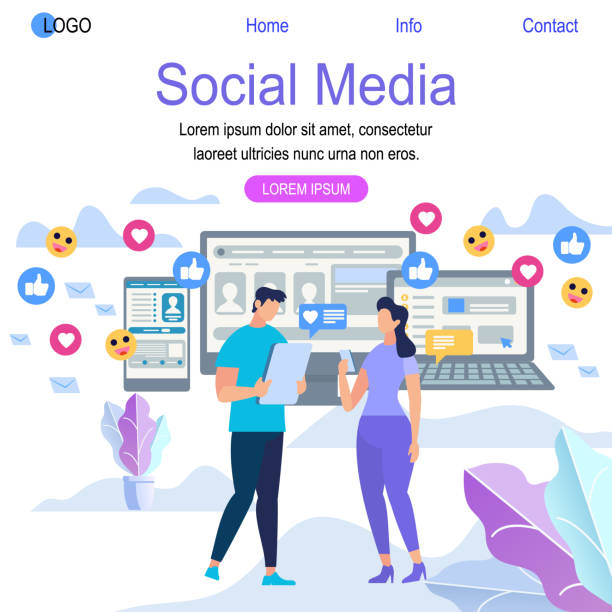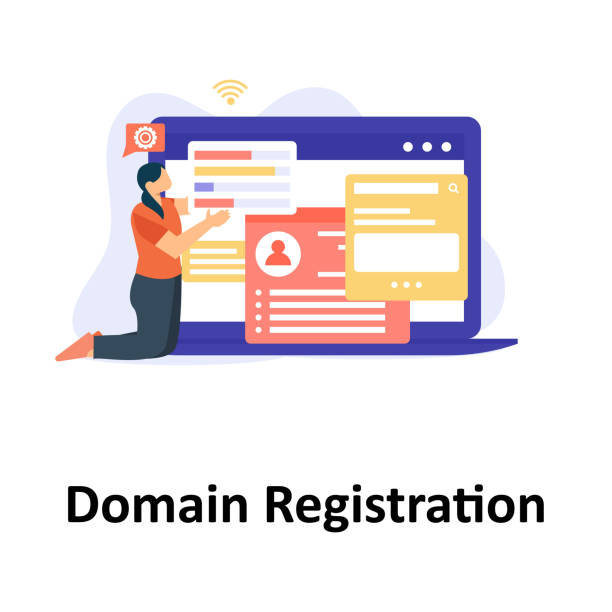Introduction to the Importance of Modern User Interface Website Design
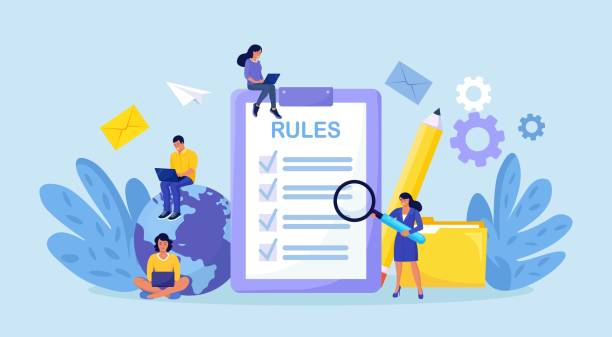
In the current digital age, where online competition has reached its peak, #website_design is no longer merely about creating an internet presence; rather, it has transformed into crafting a memorable user experience.
Modern UI website design not only gives your website an attractive and eye-catching appearance but also provides a smooth and intuitive path for users to interact with your content and services.
This novel approach, beyond mere aesthetics, considers #efficiency and #effectiveness, helping businesses to stand out and be accessible in the boundless sea of information.
A website with an old and inefficient user interface quickly discourages users and will have a high Bounce Rate.
In contrast, a smart and modern user interface encourages users to stay, explore, and ultimately become loyal customers.
This is considered a strategic advantage, especially in today’s highly competitive market.
In fact, every aspect of design, from color scheme and font to element layout and responsiveness, plays a role in shaping the overall user experience and must be chosen with precision and purpose.
The ultimate goal is not just to attract attention but to create a deep and lasting connection with the audience.
This educational and explanatory approach forms the foundation for understanding the importance of modern UI website design.
Are you tired of your e-commerce site having visitors but no sales? RasawWeb solves your core problem with professional e-commerce website design!
✅ Significant sales increase with targeted design
✅ Flawless user experience for your customers
⚡ Get free consultation!
Key Principles in Modern UI Website Construction
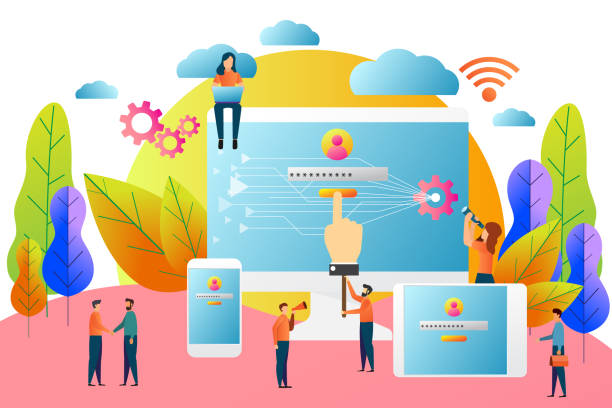
Building a website with modern UI is based on robust principles that focus on user experience beyond visual aesthetics.
The first and perhaps most important principle is “simplicity.”
A modern user interface should be free of any complexity and unnecessary elements so that the user can easily access what they want.
“Responsiveness” (Responsive Design) is another vital principle; meaning your website should display well on all devices, from desktop computers to tablets and smartphones, providing a consistent user experience.
This principle is essential for accessibility and covering a wide range of users.
“Accessibility” is also a crucial backbone in modern UI design.
A modern website must also be usable for individuals with special needs (such as visual or motor impairments).
This includes using appropriate color contrast, adjustable font sizes, and keyboard navigation.
“Intuitiveness” is another important principle; meaning the user should be able to interact with the website and find their way without needing training or guidance.
Using recognized design standards and common behavioral patterns helps with this.
Finally, “Consistency” in design, which includes the continuous use of a visual language, fonts, colors, and interactive patterns throughout the website, gives the user confidence and a sense of familiarity.
These specialized and educational principles lay the foundation for a strong and efficient user interface.
Leading Tools and Technologies in Modern UI Design

To achieve modern UI website design, designers rely on a set of advanced tools and technologies.
In the field of User Interface and User Experience (UI/UX) design, software such as Figma, Adobe XD, and Sketch are recognized as industry standards.
These tools provide interactive design and prototyping capabilities, allowing designers to test and refine their designs before actual coding.
In addition to design software, familiarity with front-end frameworks and libraries such as React.js, Vue.js, and Angular is essential for implementing these designs.
These technologies help developers to create complex and responsive user interfaces with high speed and efficiency.
The use of Design Systems has also become prevalent in large companies, providing a set of principles, components, and guidelines to ensure consistency and scalability in design.
For example, Google’s Material Design or Microsoft’s Fluent Design are examples of popular design systems.
Specialized knowledge in this field and the ability to use these tools are key to creating an innovative and efficient user interface.
Below, a comparative table of some popular UI design tools is presented, which has an educational and specialized aspect.
| Feature | Figma | Adobe XD | Sketch |
|---|---|---|---|
| Real-time Collaboration | Very strong (web-based) | Strong (cloud-based) | More limited (requires plugins) |
| Platform Availability | Web, Desktop (Windows/Mac) | Desktop (Windows/Mac) | Mac only |
| Prototyping | Advanced and flexible | Fast and easy | With plugins (e.g., InVision) |
| Design System | Component-driven, Variable Fonts | Component-driven, States | Symbol-based |
The Indissoluble Link between UI and UX in Modern Design

Often, User Interface (UI) and User Experience (UX) are mistakenly used interchangeably, but in reality, they are two sides of the same coin that require close collaboration to achieve modern UI website design.
UI refers to the visual and interactive aspects of a digital product (such as buttons, icons, colors, and layout), while UX focuses on the overall user experience of interacting with that product; how easy, efficient, and enjoyable it is.
In other words, UI is like the look and feel of a car (dashboard design, seats, steering wheel), while UX refers to the overall driving experience (comfort, handling, fuel efficiency).
A successful and modern website design is the result of integrating these two aspects.
A beautiful but confusing user interface leads to a poor user experience, just as an excellent user experience without visual appeal might fail to attract users.
Modern UI/UX designers use user research, usability tests, and data analysis to understand user needs and behaviors.
This analytical and explanatory approach ensures that every design element is not only beautiful but also functional and purposeful, ultimately leading to a seamless user experience.
This synergy is the heart of every modern web design.
Are you dissatisfied with your e-commerce site’s low sales?
RasawWeb is your solution for having a professional and high-selling e-commerce website.
✅ Significant increase in sales and revenue
✅ Easy and enjoyable shopping experience for customers
⚡ Get a free consultation from RasawWeb right now!
Current and Future Trends in User Interface Design

The world of modern UI website design is constantly evolving, with new trends emerging rapidly.
Staying aware of these trends is crucial for maintaining competitiveness.
One prominent trend is “Dark Mode,” which has gained significant popularity due to reduced eye strain and battery saving on OLED devices.
Micro-interactions also play a significant role; small, subtle animations that provide visual feedback for user actions and help increase delight and engagement.
These small but powerful elements enrich the user experience.
AI-driven Personalization is a growing trend that enables websites to tailor their content and experience based on each user’s history and preferences.
This can range from displaying suggested products to changing page layouts based on user behavior.
Minimalist design and the use of Whitespace to improve readability and focus on content also remain popular.
Furthermore, the emphasis on Voice User Interface (VUI) and Augmented Reality (AR) in UI design has opened new horizons for designers, indicating that the future of modern UI website design will extend beyond flat, two-dimensional pages.
This news- and analytical approach helps in understanding the dynamism of this field.
Challenges and Solutions in Implementing Modern UI Website Design
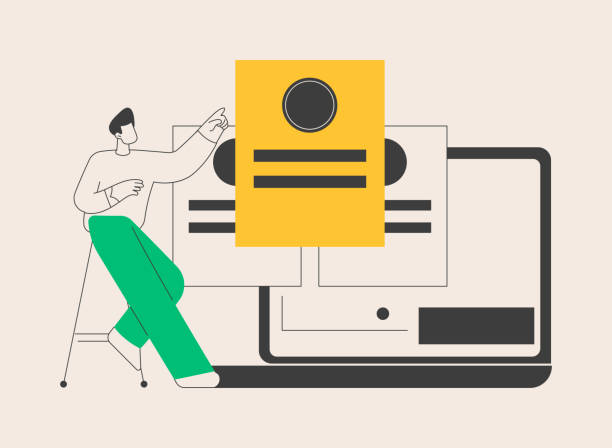
Implementing modern UI website design, while offering numerous benefits, is not without its challenges.
One of the biggest challenges is ensuring “Browser Compatibility”; meaning the website design must display correctly across all major browsers and their various versions.
The solution to this challenge is to use web standards and extensive testing across different browsers.
Another challenge is “performance optimization.”
Modern user interfaces often include animations, high-quality images, and complex scripts, which can reduce page loading speed.
To resolve this issue, techniques such as image optimization, code compression, and lazy loading should be used.
“Maintaining design consistency” in large projects with multiple teams is also a common challenge.
Using comprehensive design systems and component libraries can solve this problem and ensure that all design elements remain unified and coherent.
Furthermore, “gaining buy-in from all stakeholders,” who may have differing views on design, requires strong communication skills and the ability to justify design decisions based on data and user research.
This guiding and analytical approach paves the way for achieving an advanced UI design.
Case Study of Websites with Modern and Successful User Interfaces
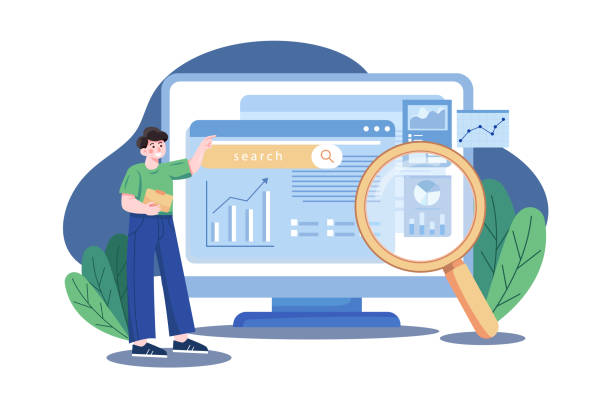
To better understand the concept of modern UI website design, looking at successful examples can be very illuminating.
Websites that have managed to attract and retain their users with creative design and an unparalleled user experience are the best models for learning.
For example, Apple.com has always been praised for its minimalist design, focus on high-quality images, and intuitive navigation.
Each product is displayed artistically, and the user can find the information they need effortlessly.
Another example is Getty Images, which, despite a vast amount of content, has provided a highly efficient user interface for searching and browsing images.
Advanced filters, quick previews, and a content organization system optimize the user experience.
Airbnb, with its user-friendly design, has managed to simplify and make the complex accommodation booking process enjoyable.
These websites, by focusing on natural interactions, attractive visual design, and smooth performance, have become brilliant examples of modern user interface design and demonstrate how successful design can become the backbone of a digital business.
This engaging and explanatory section will inspire you.
| Website | Key UI/UX Feature | Why is it successful? |
|---|---|---|
| Apple.com | Minimalist design, high-quality images, intuitive navigation | Product focus, simplicity and elegance in presentation |
| Airbnb | Simple booking process, powerful filters, high-quality photos | Unparalleled user experience for discovering and booking accommodation |
| Stripe | Clear documentation, clean design, use of explanatory graphics | Combines technical complexity with a simple user interface |
The Future of Modern UI Website Design: New Horizons

A look into the future of modern UI website design presents exciting prospects.
One of the most important directions is the deeper integration of Artificial Intelligence (AI) and Machine Learning (ML) into user experience design.
These technologies will be able to dynamically personalize user interfaces based on each user’s individual needs by analyzing behavioral data.
This will go beyond simple recommendations and can lead to real-time changes in website layout, content, and even interactive tone.
Furthermore, it is expected that voice and more natural interactions with websites, through Voice User Interfaces (VUI), will become increasingly prevalent.
Users will be able to speak their commands instead of typing, which will significantly enhance accessibility and ease of use.
Augmented Reality (AR) and Virtual Reality (VR) also hold great potential to change how we interact with web content; from displaying products in 3D in a real environment to creating immersive web experiences.
These technologies can blur the lines between the physical and digital worlds.
Given these trends, it can be predicted that the future of UI design will increasingly move towards creating immersive, intelligent, and unparalleled experiences.
This thought-provoking and analytical section prompts us to reflect on the future of this field.
Does your current corporate website present a worthy image of your brand and attract new customers?
If not, transform this challenge into an opportunity with RasawWeb’s professional corporate website design services.
✅ Significantly improves your brand’s credibility and image.
✅ Paves the way for you to attract new leads and customers.
⚡ Contact RasawWeb now for a free and specialized consultation!
How to Measure the Success of a Modern User Interface?

After implementing modern UI website design, the next crucial step is measuring its success.
Merely having a beautiful appearance is not enough; it must be ensured that the new design meets business objectives and user needs.
There are multiple metrics for evaluating the effectiveness of a modern user interface.
One of the most important metrics is “Conversion Rate”; that is, the percentage of visitors who perform the desired action (such as purchasing, signing up, or filling out a form).
A successful UI/UX should increase this rate.
“Bounce Rate” also indicates the percentage of users who leave the website after viewing only one page.
A low bounce rate is a sign of the website’s attractiveness and user-friendliness.
“Time on Site” and “Pages per Session” are also metrics for measuring user engagement with content.
The higher these numbers, the more indicative they are of greater user satisfaction with their experience.
Furthermore, “user surveys” and “Usability Testing” can be used to gather direct feedback from users.
Tools like Google Analytics, Hotjar, and Crazy Egg help you collect and analyze this data and make data-driven decisions for continuous improvement of your user interface.
This specialized and guiding approach helps you in continuous design optimization.
Practical Steps to Start a Modern UI Website Design Project
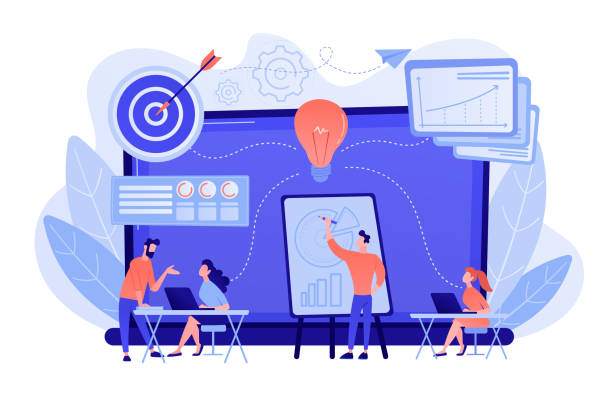
For anyone planning to embark on a modern UI website design project, taking practical and planned steps is essential.
The first step is “audience research and understanding.”
You need to know who your target users are, what their needs, goals, and pain points are.
This information will be the foundation of every design decision and will help you create a truly useful and efficient user experience.
The second step is “defining website goals.”
What do you want your website to do for your users and your business? Is the goal to sell products, provide information, or build an online community? Clear goals help you set priorities and the design path.
Next, engage in “competitor analysis.”
See what your competitors are doing, what their strengths and weaknesses are.
This can give you innovative ideas and help you learn from others’ mistakes.
In the next stage, proceed to “Wireframe and Prototype design.”
These steps allow you to design and test the website’s structure and flow before delving into visual details.
Using tools like Figma or Adobe XD is very useful at this stage.
“Testing with real users” is also crucial.
Even a small test with a few users can uncover major problems before the website is launched.
Finally, “selecting the right design and development team” with sufficient knowledge and experience in modern UI/UX design will guarantee the success of your project.
This guidance and educational approach will set you on the right path to achieve an advanced website design.
Frequently Asked Questions
| Question | Answer |
|---|---|
| What is modern UI website design? | It is an approach to website design that focuses on clean aesthetics, simplicity, high usability, and providing a visually appealing and pleasant user experience (UX). |
| What are the key elements of a modern web user interface? | Flat Design, intelligent use of whitespace, appealing typography, intuitive navigation, high-quality images, and responsiveness are among the main elements. |
| Why is using a modern user interface important in website design? | It attracts and retains users, increases brand credibility, improves conversion rates, and provides a smooth and pleasant user experience. |
| How does modern User Interface (UI) affect User Experience (UX)? | Modern UI directly improves user experience by creating a beautiful, organized, and understandable environment, making interaction easier. |
| What is the role of typography in modern UI design? | Typography is crucial for readability, creating information hierarchy, conveying brand mood, and the overall visual appeal of the site. |
| How does Responsive Design relate to modern UI? | Responsive design is an integral part of modern UI, as it ensures that the site’s appearance and functionality are consistent and optimal across all devices (mobile, tablet, desktop). |
| What are the current trends in modern web UI design? | Dark Mode, subtle animations, creative use of whitespace, prominent typography, and the use of asymmetrical graphic elements are among recent trends. |
| How can one ensure that a modern user interface has high Usability? | By conducting user testing, simplifying navigation, providing clear Calls to Action (CTAs), improving loading speed, and paying attention to Accessibility. |
| What is the main difference between UI and UX in modern design? | UI is the look and feel of the site (user interface), while UX is the overall user experience when interacting with the site. UI is considered a part of UX. |
| What tools are used for modern web UI design? | Common tools like Figma, Sketch, Adobe XD, Photoshop, and Illustrator are used for modern UI design and prototyping. |
And other services of RasawWeb Advertising Agency in the field of advertising
Smart UI/UX: Professional optimization for digital branding using key page optimization.
Smart Direct Marketing: A fast and efficient solution for customer acquisition, focusing on intelligent data analysis.
Smart Digital Branding: A specialized service for increasing user engagement based on precise audience targeting.
Smart Social Media: Revolutionize click-through rates with the help of marketing automation.
Smart SEO: An innovative platform for improving online growth with an SEO-driven content strategy.
And over hundreds of other services in the field of internet advertising, advertising consulting, and organizational solutions
Internet Advertising | Advertising Strategy | Advertorial
Resources
Importance of Website Design
Importance of Web Design
Modern User Interface Design
Principles of Modern User Interface Design
💡 To help your business soar in the digital world, RasawWeb Afarin Digital Marketing Agency, specializing in SEO, online advertising, and user-friendly website design, is by your side to ensure a powerful and lasting presence.
📍 Tehran, Mirdamad Street, next to Bank Markazi, Kazeroon Jonoubi Alley, Ramin Alley, No. 6


